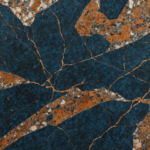Regular cleaning practices are paramount to maintain the longevity and functionality of your dock. Consistent cleaning not only enhances the aesthetic appeal of your dock but also helps prevent the buildup of harmful substances that can cause structural damage over time. Implementing a thorough cleaning routine can significantly extend the lifespan of the dock materials, whether they are wood, composite, or metal.
To begin, it is essential to establish a regular cleaning schedule that suits the material of your dock and its exposure to environmental elements. For example, docks situated under trees or near water bodies with high sediment levels may require more frequent cleaning sessions. Consider the following cleaning practices:
- Sweeping: Regularly sweep the surface of the dock to remove debris such as leaves, branches, sand, and dirt. Accumulated organic material can lead to rot and discoloration, particularly in wooden docks.
- Washing: Use a power washer or a garden hose to wash the dock surface. A mild biodegradable cleaner can be used to remove stains and algae without harming the surrounding environment. Avoid harsh chemicals that can degrade the material or seep into the water, damaging the ecosystem.
- Mold and Mildew Removal: Mold and mildew can accumulate quickly, especially in shaded, damp areas. Apply a specialized cleaner or a vinegar-water solution to eliminate these growths. Ensure the area is well rinsed to prevent any residue.
- Spot Cleaning: Handle spills or stain-prone substances like oil or fuel immediately to avoid long-term damage. Blot the area with a dry cloth and clean with an appropriate cleaning agent as necessary.
Choosing the right cleaning tools and solutions is critical to adequately maintaining your dock. Below is a comparison of commonly used cleaning methods to help guide your choices:
| Method | Pros | Cons |
| Power Washing | Efficient for deep cleaning, Removes stubborn dirt |
Can damage wood if not adjusted properly, May be costly due to water usage |
| Biodegradable Cleaners | Environmentally friendly, Effective on organic growth |
May not remove heavy stains, Requires elbow grease |
| Vinegar-Water Solution | Non-toxic, Inexpensive |
May require multiple applications, Less effective against grease |
Maintaining a clean dock is not just about aesthetics; it’s about protecting your investment. Over time, neglected dirt and organic growth can lead to structural degradation, necessitating expensive repairs or even replacements. Consistent cleaning helps prevent these issues, ensuring that your dock remains a safe and enjoyable space for years to come.
Inspecting for structural damage
Regular inspections are an integral part of ensuring your dock remains structurally sound and durable. Over time, docks can be subjected to various stressors, including environmental factors and regular use, which can lead to wear and potential damage. Performing thorough inspections can help identify issues before they escalate into costly repairs. Here’s how you can systematically inspect your dock for structural damage:
- Visual Inspection:
- Begin with a detailed visual examination of the dock’s surface and substructure. Look for visible signs of damage such as cracks, fractures, or deformations, particularly in the decking boards and support beams.
- Pay close attention to discoloration or soft spots on wooden planks which can indicate rot, mold, or moisture damage.
- Check for any signs of rust or corrosion if your dock is made of metal; these can weaken the structure significantly over time.
- Physical Testing:
- Walk over the entire surface of the dock and note any areas that feel unstable or make unusual sounds underfoot. These could be indicative of loose boards or failing support structures.
- Apply gentle pressure to railings, posts, and beams to ensure they are firm and secure. Any wobbling or movement suggests the need for tightening or reinforcement.
- Inspect Fasteners and Connectors:
- Examine all bolts, screws, and nails used in the construction of your dock. Look for any that are missing, loose, or corroded.
- Tighten any loose fasteners and replace rusted or broken ones. Using stainless steel or other corrosion-resistant hardware can enhance the longevity of your dock.
- Check Underwater Components:
- If your dock has underwater supports or floats, these should be inspected to ensure they remain intact and undamaged. Consider using a snorkeling mask or hiring a professional if the water is too deep or murky.
- For floating docks, assess the pontoons or barrels for leaks and ensure they are providing adequate buoyancy. Repair or replace any compromised components.
- Documentation:
- Record any issues found during your inspection with photographs and detailed notes. This will be useful in tracking the progression of any damage over time and when communicating with repair professionals.
- Maintain a log of inspection dates and any maintenance work completed, which can help in scheduling future inspections and upkeep systematically.
- Seek Professional Help:
- If you encounter significant damage or are uncertain of the structural integrity of your dock, consult with a professional dock repair service. They can provide an expert assessment and recommend necessary repairs or improvements.
Scheduling regular inspections, at least once every season or more frequently if your dock is heavily used or exposed to extreme weather, can help you stay ahead of maintenance and ensure the dock remains a safe and secure place for recreation and relaxation.
Protecting against environmental elements
Docks face a constant barrage from nature’s elements, such as the sun, rain, wind, and even saltwater, for those in coastal areas. Protecting your dock from these environmental challenges is crucial for ensuring its longevity and maintaining its safety and aesthetic appeal. Begin by using high-quality sealants or stains that offer protection from the sun’s ultraviolet (UV) rays, which can cause wood to crack, fade, and splinter over time. Applying a UV protectant can significantly extend the life of wooden docks, keeping them looking vibrant and reducing the rate of wear and tear.
Weatherproofing extends beyond just protective coatings. Water is a potent adversary, capable of fostering mold and rot in wooden components and causing corrosion in metal fastenings. To mitigate water damage, ensure your dock is equipped with proper drainage systems to swiftly remove standing water. Additionally, periodic resealing of wooden surfaces will create a barrier against moisture penetration, helping to prevent decay.
If your dock sits in a saltwater environment, it’s imperative to incorporate corrosion-resistant materials and maintain regular maintenance practices to ward off the corrosive effects of salt. Choosing materials like stainless steel fasteners, which resist rust, can provide substantial benefits in extending the durability and performance of your dock’s hardware.
Furthermore, consider implementing protective barriers or roof structures if your dock is exposed to frequent or intense weather conditions. Windbreaks or partial coverings can help protect the dock surface and structure from the full brunt of storms, while also offering some shade, which helps in reducing UV-induced fading.
Vegetation offers another layer of protection by acting as a natural shield against winds and harmful UV rays. Strategically planting bushes, trees, or installing windbreaks around exposed areas can enhance the dock’s longevity, provided these don’t interfere with the structural components.
Assess the physical geography and specific environmental threats your dock faces to tailor protection strategies effectively. Investing in these measures not only guards against immediate weather damage but also reduces long-term repair costs and keeps your dock in premium condition, ready for enjoyment regardless of the weather.
Maintenance of dock hardware
Paying attention to dock hardware is essential for ensuring long-term functionality and safety. Regular maintenance of the hardware can prevent minor issues from becoming costly repairs, maintaining the overall integrity of your dock. Here are some key points to focus on for effective dock hardware maintenance:
Start by conducting a thorough inspection of all hardware components. This includes checking for rust, corrosion, and loosening in bolts, screws, and fasteners that hold your dock together. Stainless steel or galvanized hardware is often recommended due to its resistance to rust and corrosion. If you find any parts that are oxidized or compromised, make sure to replace them promptly with high-quality alternatives.
Lubrication is another critical component of maintaining dock hardware. Apply a marine-grade lubricant on moving parts such as hinges, chains, or wheels that may be used in adjustable docks or gangways. This helps minimize wear and tear, reduces noise, and ensures smooth operation, especially in high-salt areas where corrosion is more aggressive.
Pay special attention to dock cleats and anchor points. These components bear significant loads and are crucial for securing your boat. Examine them for signs of wear or rust. Tighten any loose cleats and ensure that the underlying structure is sound enough to handle the strain of your vessel. Upgrading to stronger cleats may be necessary if you notice any signs of weakening or deformation.
The dock bumpers and fenders, which safeguard boats from damage, are also important. Check these protective devices regularly for signs of damage, wear, or detachment. If they are made of rubber or foam, ensure they have not become brittle or flattened over time. Replace worn-out bumpers to maintain effective protection for both the dock and your boat.
Chain or cable systems that might be part of floating docks or mooring lines should be inspected for fraying and rust. These components are often exposed to both UV rays and water, which can degrade them quickly. Replacement should be considered if any severe damage is found, and using UV-resistant, marine-grade materials can be a good preventative measure.
Hydraulic or mechanical lift systems, used for moving parts of the dock or raising boats out of the water, require regular checks to ensure they operate correctly. Follow the manufacturer’s maintenance guide concerning inspecting these systems, as malfunctioning equipment can result in serious damage or safety hazards.
Remember to document all maintenance activities, noting the condition of hardware and any replacements made. This log will provide invaluable data for future maintenance and act as a record that you can refer to for warranty claims or when selling the dock.
Taking these steps not only prolongs the life of your dock hardware but also ensures the safety and functionality of the entire structure. Once incorporated into your regular maintenance routine, these practices will help safeguard your dock against the natural wear and tear from environmental conditions and everyday use, ensuring it remains a reliable fixture for years to come.
Seasonal upkeep and winterization
As the seasons change, so too do the maintenance needs of your dock. Preparing your dock for different weather conditions is essential to prolong its life and efficiency. During the warmer months, it’s vital to inspect the dock frequently for signs of wear and tear due to increased usage. Any minor repairs should be addressed promptly to prevent more significant issues from developing.
As you transition into the fall, take advantage of the cooler weather to perform more intensive maintenance tasks. This might include resealing wooden surfaces to protect them against moisture during the rainy seasons or reinforcing structural elements that could be weakened by upcoming storms. If your dock is in a location susceptible to falling leaves, ensure that the dock surface and any drainage systems are clear to prevent blockages and moisture-related damage.
Winterization is a crucial aspect of seasonal upkeep, especially in regions prone to freezing temperatures. If the dock will be unused throughout the winter, consider removing any components that could be affected by ice, such as hoses or removable sections of the dock. Plumbing lines should be drained, and antifreeze can be added to systems prone to freezing to prevent bursts or leaks.
For floating docks, it is essential to adjust mooring lines to accommodate fluctuations in water levels caused by ice formation. Inspect flotation systems for any signs of damage or instability and ensure they are secured to withstand shifting ice.
All electrical systems, including lighting or boat lift motors, should be inspected and deactivated if not protected against cold conditions. Batteries should be removed and stored in a warm, dry area to preserve their lifespan through the winter months.
Additionally, consider using protective coverings or tarps to shield the dock from precipitation and ice build-up. These measures will not only protect your dock from harsh winter elements but will also make springtime preparations more manageable, as the dock will emerge from winter in a condition much closer to ready use.
In colder climates, you may also want to invest in a de-icing system to prevent ice from forming around your dock, which can lead to structural damage. These systems keep water moving beneath the dock, inhibiting ice formation and thus protecting both the dock and any moored vessels.
By establishing a solid plan for seasonal maintenance and winterization, you’ll help ensure your dock remains in excellent condition year-round, ready to provide a safe and enjoyable platform once the warmer weather returns.
In conclusion, diligent dock maintenance is the foundation for an enduring, reliable aquatic structure. By instituting regular cleaning practices and thorough inspections, safeguarding against environmental burdens, maintaining hardware integrity, and preparing for seasonal changes, you ensure your dock remains safe, functional, and attractive. These combined efforts not only enhance the dock’s performance but also prolong its lifespan, allowing you and your loved ones to enjoy its benefits for many years to come.


